We may not have the course you’re looking for. If you enquire or give us a call on +61 1-800-150644 and speak to our training experts, we may still be able to help with your training requirements.
We ensure quality, budget-alignment, and timely delivery by our expert instructors.
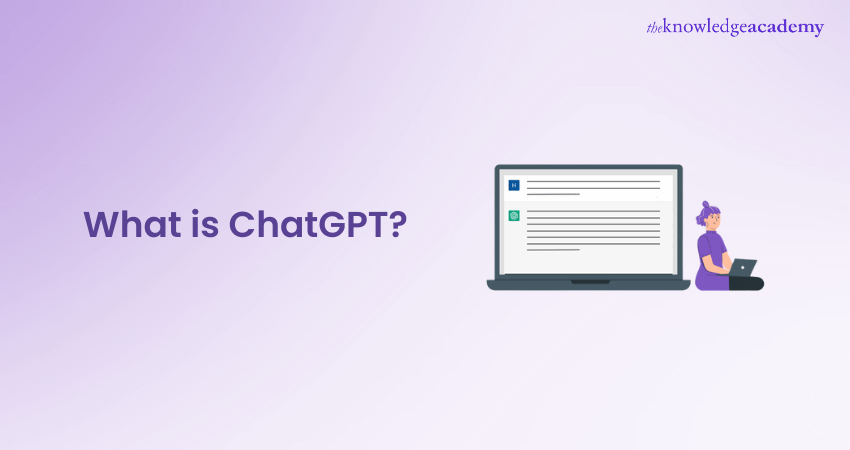
OpenAI’s ChatGPT stands as a remarkable tool transforming how we communicate and access information. But What is ChatGPT exactly? and Is ChatGPT Safet to Use? Far more than a simple chatbot, it’s an advanced language model trained to understand and respond to questions in a way that feels almost human. Since its launch, ChatGPT has captured global attention—paving the way for innovations in education, business, and even creative fields.
So, What is ChatGPT doing to change the future? By bridging the gap between human curiosity and artificial intelligence, ChatGPT is empowering people to solve problems, enhance productivity, and explore ideas in new ways. This blog dive deeper into how ChatGPT works, its limitations, and the many exciting possibilities it offers.
Table of Contents
1) What is ChatGPT?
2) Who Created ChatGPT?
3) How Does ChatGPT Work?
4) What Kind of Questions Can Users Ask to ChatGPT?
5) How are People Using ChatGPT?
6) Benefits of ChatGPT
7) What are ChatGPT's Limitations?
8) What are the Main Ethical Concerns Associated with ChatGPT?
9) Alternatives to ChatGPT
10) Conclusion
What is ChatGPT?
ChatGPT, created by OpenAI, is an AI tool designed for interactive conversations, offering detailed answers on various topics—from complex subjects to creative requests. Unlike search engines, it provides single, authoritative responses, allowing users to refine queries or ask follow-up questions for more specific information.
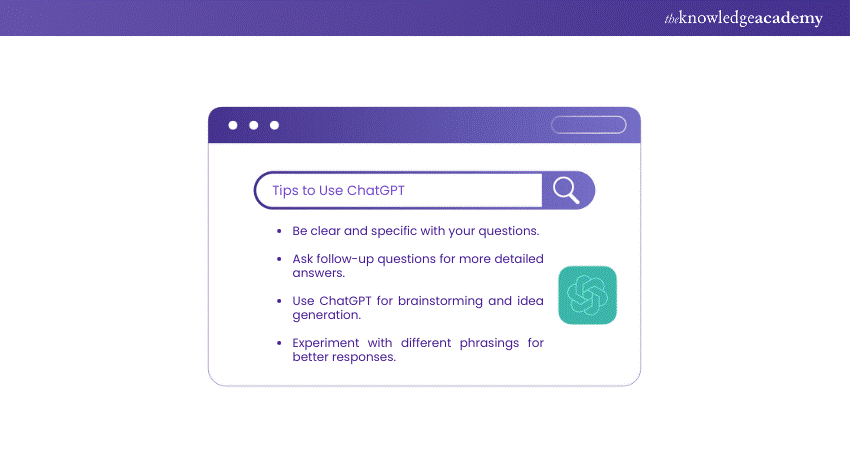
Since its public release, ChatGPT has gained immense popularity, drawing over a million users in its first five days and reaching 100 million monthly active users within two months. OpenAI gathers feedback from users worldwide to enhance its capabilities continually.
ChatGPT is available in two versions which includes a free version and a paid subscription, ChatGPT Plus. Similarly, if you're curious about how to use Sora OpenAI, you'll find there are various setups and features designed to suit different needs. The paid version, launched internationally in February, costs around £16.30 per month and offers benefits such as access during peak times, faster response speeds, and early access to new features.
As a sibling model to OpenAI's InstructGPT, ChatGPT generates single, authoritative responses rather than multiple answers like a search engine, allowing users to refine questions or ask follow-ups for more targeted information, with applications like ChatGPT for Outlook enabling enhanced email management and productivity.
Who Created ChatGPT?
OpenAI, an artificial intelligence (AI) research company, developed ChatGPT and released it in November 2022. Founded in 2015 by entrepreneurs and researchers, including Elon Musk and Sam Altman, OpenAI is supported by several investors, with Microsoft being the most prominent. OpenAI also created DALL-E, an AI tool that generates art from text prompts.
How to Use ChatGPT?
1) Visit the Platform: Go to the ChatGPT website or app.
2) Enter Your Query: Type your question or request in the chatbox.
3) Submit: Hit enter to receive a response.
4) Refine Your Input: Ask follow-up questions for more specific answers.
5) Engage Interactively: Use it for dynamic conversations and tailored information.
How Does ChatGPT Work ?
The working of ChatGPT can be broken down into the following:
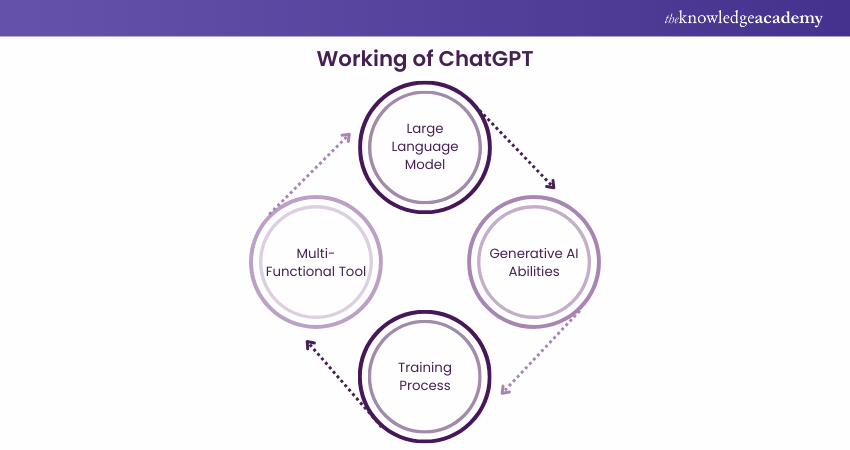
1) Large Language Model: ChatGPT is a large language model trained on vast amounts of data—including articles, textbooks, and internet content—to simulate human speech and provide informative responses. It originated as GPT-3.5, following GPT-3, and has since advanced to GPT-4 for paid users.
2) Generative AI Abilities: ChatGPT’s strength lies in its ability to generate human-like text and engage in realistic dialogue. Its responses are refined through Reinforcement Learning from Human Feedback (RLHF), where trainers simulate user and AI interactions.
3) Training Process: OpenAI’s trainers create conversations, playing both user and AI roles to ensure authentic interactions. Trainers also utilize model-written suggestions to teach ChatGPT skills like speech patterns, translation, and text completion, while also adhering to important security practices like knowing how to change OpenAI password
4) Multi-Functional Tool: ChatGPT serves as a search engine, chatbot, and Virtual Assistant, answering queries in a text box. With the latest GPT-4 upgrade available on the paid ChatGPT Plus tier, it can now respond to both text and image prompts and handle up to 20,000-word inputs.
What Kind of Questions Can Users Ask to ChatGPT?
Users can ask ChatGPT a wide range of questions on various topics, including but not limited to:
a) General Knowledge Questions: Users can ask ChatGPT about various fields like history, science, literature, art, technology, and economics.
b) Personal Questions: Users can ask ChatGPT about personal questions such as wealth accumulation, family issues, marital issues, etc., and receive reasonable advice in return.
c) Fun Questions: Users can ask the AI model entertaining and humorous questions like jokes, trivia and riddles.
d) Current Affairs: Users can ask ChatGPT about recent news, events, or trends.
e) Educational Questions: Users can ask the chatbot about educational questions and queries and get them resolved almost instantly. However, this does not apply to logic-based Q&A.
f) Philosophical Questions: Users can ask the AI model about ethical, philosophical, or moral issues and perspectives.
g) Creative Questions: Users can ask ChatGPT for inspiration or ideas for creative projects like art, writing, or music.
h) Technical Questions: Users can ask the chatbot about technical issues, including troubleshooting, software, hardware, or coding, especially if they encounter problems like ChatGPT not working.
These are just some ChatGPT Examples of questions that users can ask ChatGPT.
Learn how to research strategy and design life cycle phases using AI. Sign up for Artificial Intelligence (AI) For Project Managers now!
How Are People Using ChatGPT?
The most common ways that people use ChatGPT are as follows:
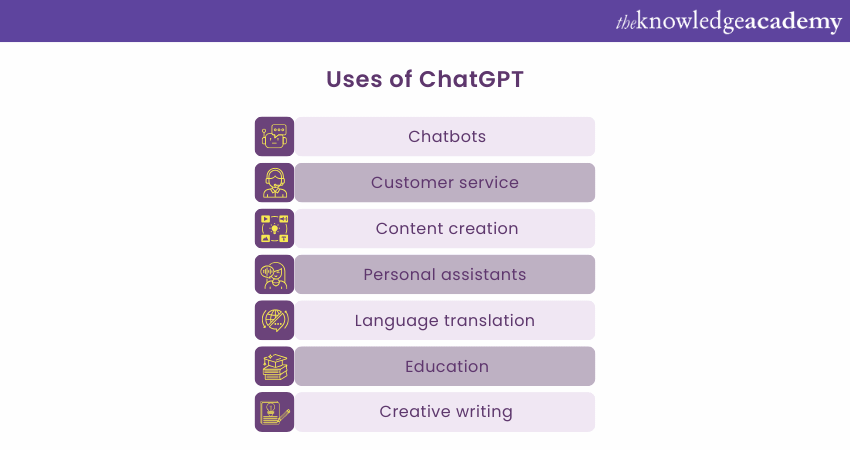
1) Chatbots: Because of the capability to simulate human-like conversations with users, it is possible for ChatGPT to power chatbots that answer customer enquiries. It is increasingly used in the field of customer support, sales, and marketing for fast communication with customers and the delivery of quick and personalised responses to customer inquiries.
2) Customer Service: A chat GPT would help customer support provide possible answers to frequently occurring customer questions, thus aiding with product information and troubleshooting steps. Bots built on the lines of ChatGPT can answer a very large number of customer queries in one go. This improves the efficiency of the teams and reduces the pending answers to customers. This will also help develop brand retention and loyalty simultaneously.
3) Content Creation: In the form of content, it can produce articles, news, blogs, social media posts, and much more. Providing the AI model with a prompt or topic on which it will work, it can generate highly quality and entertaining content, tailored to target audience. If you don't like the information given, then you can refresh the content generating that which will prove useful for you.
4) Personal Assistants: It can create personal assistants that would be useful in doing the jobs for a person. Some jobs such as appointment making, reminder setting, or mailing are supported. Speech recognition and natural language processing (NLP) could improve the user interface (UI) with better interactivity.
5) Language Translation: The primary application of ChatGPT for language translation is through training on parallel corpora of texts in different languages. It produces high-quality text translations from one language to another, which enhances cross-lingual communication. This makes it a valuable tool for any Translator, helping to streamline the translation process while maintaining accuracy and context.
6) Education: Education is another area where the chatbot can be used to deliver the personalised experience of learning for students. The model could generate interesting and interactive content through which students learn new things, and a better grasp is achieved in complex issues. The bot can be employed as a device for fast revision as well. When there's a need-to-know information on some topic as early as possible, the AI model proves a good basis to depend upon.
7) Creative Writing: It can be used to create ideas and inspire creativity in creative writing; maybe even get out of writer's block. Feeding the prompts or keywords into the AI model can help generate novel and creative ideas for writers.
Ready to Nail That Virtual Assistant Role? Start with These Virtual Assistant Interview Questions!
Benefits of ChatGPT
Here are some of the advantages of ChatGPT:
a) Natural Language Understanding: One of the key benefits of ChatGPT is its ability to understand natural language queries. In other words, it can understand and respond as a human does to queries. The architecture of this neural network used in ChatGPT to allow it to identify patterns and relationships in text data is how it can process language.
b) Improved Customer Service: By providing quick and accurate answers, ChatGPT will serve improved customer service through speedy attendance to queries on the customers' end and possibly minimise the time it takes to give an answer; thus, customer satisfaction increases. The chatbot can also be customised to automate customer service so that one may free up human resources and have more time on other tasks.
c) Customised Recommendations: It could be used for making personalised recommendations that would cater to the preference and behavior of a user. For example, it can give a proposition of products or services depending on the browsing history of a website or other products that they bought beforehand. It would then be capable of UX enhancement and better sales.
d) Data Analysis: This can identify trends and patterns in large blocks of text data, like social media posts, customer reviews, or news articles, which could help companies make data-driven decisions.
e) Language Translation: This is the capacity of translating text from one language to another. That may be particularly important in the case of businesses spread over different continents and seeking to communicate with customers on the other continent in a different language.
f) Automated Content Generation: This can be applied as content generation, which may include product descriptions, social media posts and blogs. This will reduce the time and resources needed to create content while greatly increasing its quality.
g) Efficient: ChatGPT could be used for repetitive chores such as data entry, customer support, and such. This increases efficiency among companies and reduces cost, too.
What are ChatGPT's Limitations?
As with any technology on the rise, there are downsides to ChatGPT. At times, ChatGPT is at Capacity Right Now, especially during periods of high demand, making it temporarily inaccessible. Below are some of the other limitations of ChatGPT:
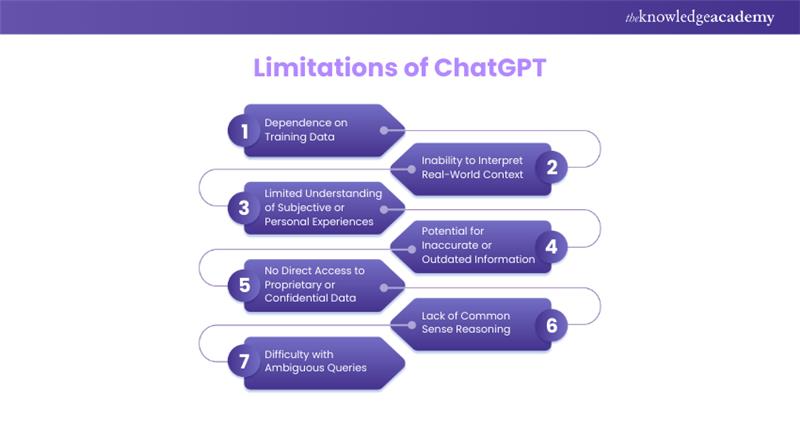
a) Dependence on Training Data: While ChatGPT can access real-time web search, its core knowledge is based on pre-existing training data, which may not always reflect the latest trends, niche topics, or emerging developments.
b) Inability to Interpret Real-World Context: ChatGPT lacks human intuition and real-world experiences, meaning it may misinterpret context, tone, or subtle nuances in certain conversations.
c) Limited Understanding of Subjective or Personal Experiences: Since it relies on patterns in data rather than personal experiences, it cannot provide firsthand opinions or emotions.
d) Potential for Inaccurate or Outdated Information: Although it can search the web, it may still generate incorrect or outdated responses, especially if the sources it retrieves contain misinformation.
e) No Direct Access to Proprietary or Confidential Data: ChatGPT cannot access private databases, paywalled content, or confidential documents unless explicitly provided by the user.
f) Lack of Common Sense Reasoning: While it can process logical arguments, it sometimes struggles with real-world reasoning, commonsense decision-making, or paradoxical situations.
g) Difficulty with Ambiguous Queries: If a question is vague or lacks context, ChatGPT may generate an inaccurate or overly broad response.
What are the Main Ethical Concerns Associated with ChatGPT?
As an AI language model, ChatGPT presents several ethical concerns that should be considered:
a) Bias: ChatGPT’s training data is focused on human-generated text, which can contain biased or discriminatory responses and amplifying existing biases.
b) Privacy: The AI model interacts with users and collects their Data, which raises concerns about how this data is used and stored.
c) Transparency: It can be challenging to understand how the chatbot makes decisions or comes up with responses, which can create a lack of transparency and accountability.
d) Misinformation: It can be used to spread misinformation or fake news, which can have real-world consequences.
e) Deception: If ChatGPT is used to impersonate humans, it can deceive individuals into thinking they are interacting with a person when they are not.
f) Dependence: People and organisations may become overly dependent on the AI model as their primary source of information. One of the biggest limitations of ChatGPT is the often-unreliable sources of information in its data bank. This may lead to false facts being portrayed in the model as real.
g) Autonomy: It’s capabilities and potential to make decisions on its own raise questions about the limits of its autonomy and responsibility.
h) Equity: Access to ChatGPT and other AI technologies may not be equally distributed, creating potential inequalities and exacerbating existing social disparities.
Alternatives to ChatGPT
As an AI model that deals with results in natural language, ChatGPT is one of several major players in the market. Some of the primary ChatGPT Alternatives include:
a) Google Gemini: Gemini, a key player in the ChatGPT vs Google debate, is Google's advanced AI model designed to handle a variety of tasks, including natural language understanding, image recognition, and real-time information retrieval. The latest version, Gemini 2.0 Flash, offers enhanced reasoning capabilities and improved performance in tasks like coding and mathematics.
b) DeepSeek: DeepSeek, a Chinese AI model, has emerged as a noteworthy competitor in the AI field due to its cost-effective development and lower computational requirements, making it an accessible and sustainable option. However, it is known for avoiding politically sensitive topics and has been criticised for certain security vulnerabilities. As the AI landscape continues to diversify, considering OpenAI Alternatives like DeepSeek provides an interesting perspective on how different models approach performance, accessibility, and security.
c) Anthropic's Claude: Claude is an AI assistant developed by Anthropic, focusing on safety and reliability. It is designed to provide helpful and accurate responses while minimising the risk of harmful outputs.
d) Meta AI: Meta AI is an open-source AI model developed by Meta (formerly Facebook). It is recognised for effectively addressing common-sense questions and is part of Meta's broader efforts in AI research and development.
e) Microsoft's Turing: Turing is a natural language model developed by Microsoft. It is trained on a vast dataset of web pages and can be used for various NLP tasks. One of its unique selling points is the relevance of answers with regards to the query posed.
What is the Purpose of ChatGPT?
ChatGPT, developed by OpenAI, is designed to assist users by providing detailed responses to a wide range of queries. Its purpose is to engage in natural conversations, help solve problems, generate creative content, and offer insights on various topics, making information easily accessible. Additionally, ChatGPT Plugins extend its functionality, allowing users to integrate specialised tools for enhanced productivity and tailored solutions.
Is ChatGPT Free?
ChatGPT offers both free and paid versions. The free version provides access to basic features, though it may have usage limits. For those requiring more advanced functionalities, such as faster response times or access to additional features, a paid subscription is available.
Gain knowledge about the different Machine Learning Algorithms. Join our Machine Learning Course now!
Conclusion
Understanding What is ChatGPT opens the door to endless possibilities. From boosting customer support and personalising recommendations to enhancing creativity and efficiency, ChatGPT represents a powerful leap in AI-driven tools. But it’s not just about what this tool can do; it’s about how ChatGPT impacts the way we connect with information, explore creativity, and streamline everyday tasks. For an alternative take on AI-driven searches, don’t forget to explore SearchGPT as well. It's also important to be aware of the option to Delete OpenAI Account should your needs change.
Learn more about AI/ML models by registering for our Artificial Intelligence and Machine Learning Courses today!
Frequently Asked Questions
How to Use ChatGPT for Professional Development?

You can use ChatGPT to build skills, solve problems, and learn faster. Practice interview questions, brainstorm ideas, and get quick insights on topics that matter to you. It’s like having a personal coach to help you grow professionally with useful advice and tips.
What is the Future with ChatGPT?

ChatGPT’s future is exciting—it’s changing how we work and learn. It will keep improving to be an even better personal assistant, mentor, and creative helper, making it easier to boost productivity and support professionals in many fields.
What are the Other Resources and Offers Provided by The Knowledge Academy?

The Knowledge Academy takes global learning to new heights, offering over 3,000 online courses across 490+ locations in 190+ countries. This expansive reach ensures accessibility and convenience for learners worldwide.
Alongside our diverse Online Course Catalogue, encompassing 19 major categories, we go the extra mile by providing a plethora of free educational Online Resources like News updates, Blogs, videos, webinars, and interview questions. Tailoring learning experiences further, professionals can maximise value with customisable Course Bundles of TKA.
What is The Knowledge Pass, and How Does it Work?

The Knowledge Academy’s Knowledge Pass, a prepaid voucher, adds another layer of flexibility, allowing course bookings over a 12-month period. Join us on a journey where education knows no bounds.
What are the Related Courses and Blogs Provided by The Knowledge Academy?

The Knowledge Academy offers various Artificial Intelligence Tools Training, including ChatGPT Course, ChatGPT Prompt Engineering Certification, Generative AI Course and Generative AI In Prompt Engineering Training Course. These courses cater to different skill levels, providing comprehensive insights into Generative AI.
Our Data, Analytics & AI Blogs cover a range of topics related to Artificial Intelligence, offering valuable resources, best practices, and industry insights. Whether you are a beginner or looking to advance your Artificial Intelligence skills, The Knowledge Academy's diverse courses and informative blogs have got you covered.
Upcoming Data, Analytics & AI Resources Batches & Dates
Date
 ChatGPT Prompt Engineering Certification
ChatGPT Prompt Engineering Certification
Fri 23rd May 2025
Fri 4th Jul 2025
Fri 5th Sep 2025
Fri 24th Oct 2025
Fri 23rd Jan 2026
Fri 20th Mar 2026
Fri 15th May 2026
Fri 17th Jul 2026
Fri 20th Nov 2026






 Top Rated Course
Top Rated Course



 If you wish to make any changes to your course, please
If you wish to make any changes to your course, please


